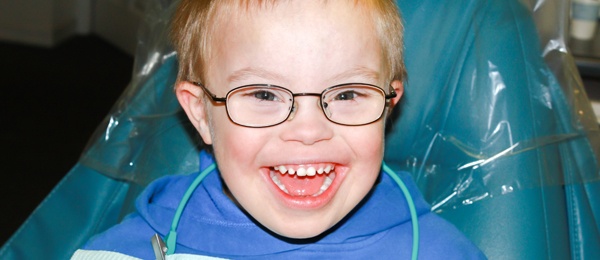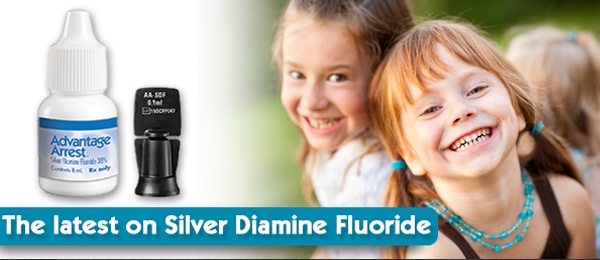Kids younger than 10 years who lost primary molars scored higher on the Child Perception Questionnaire (CPQ) in areas of oral symptoms, emotional limitations, and emotional well-being. The harm to their oral-health–related quality of life was independent from the presence of caries in other stages of progression. The findings are from a study published online August 13 in International Journal of Pediatric Dentistry.
Authors designed the study to measure the prevalence of early loss of primary molars in children and to see how it impacts their oral-health–related quality of life. The study included 667 children aged 8 and 9 years who attended public or private schools in Aracaju, Brazil, a town with fluoridated water (0.7 milligrams per liter) since 1980. A total of 325 children were boys (48.7%), 348 were 8 years old (52.2%), and 388 were enrolled in public schools (58.2%). Most kids (73%) had at least one cavitated untreated carious lesion.
Examiners assigned codes 0 through 5 to describe primary molars as follows: 0, present and sound; 1, present and restored; 2, present but with restorative need; 3, present but with extraction need; 4, residual root; and 5, absent. Authors considered codes 3 through 5 as early loss of primary molars. Children completed a Brazilian version of the CPQ, which focused on oral symptoms, functional limitations, emotional well-being, and social well-being. Answers were recorded on a 5-point Likert scale.
Authors found the prevalence of early loss of primary molars was 65.4%, with a 95% confidence interval of 51.1% to 77.3%. They noted that CPQ scores for kids with early tooth loss were twice as high as kids with no missed primary molars. Authors recorded high scores in areas of oral symptoms, functional limitations, and emotional well-being. They observed a higher proportion of early loss in children with untreated caries in other teeth and in children enrolled at public schools.
Those who scored high on the CPQ included kids with early tooth loss, girls, and kids with caries in other teeth. Children having cavitated carious lesions in other teeth had 24% higher prevalence of tooth loss, and children from private schools had 20% lower proportion of early loss of primary molars.
“It is known that tooth loss is the last stage in the evolution of caries disease, but the significance of the changes caused by the disease is questionable and individualized, and the patient often may not judge the loss to be an aesthetic and/or functional problem,” the authors concluded. “Thus, it is important, whenever possible, to consider the individual's perception of the alteration and not only consider the perspective of clinical outcomes.”
Read the original article here or contact the ADA Library & Archives for assistance.
More frequent checkups equals less repeated general anesthesia for patients with special health care needs
Patients with special health care needs (SHCN) who have checkups more than 6 months apart are roughly 4 times more likely to undergo repeated general anesthesia (GA) than those who have checkups more often. This finding is from a study published in the May-June issue of Pediatric Dentistry.
Authors designed the study to compare treatment outcomes for patients with SHCN after GA. They divided 157 patients (96 male, 61 female) with SHCN into 2 groups: regular (checkup intervals of < 6 months) and irregular (checkup intervals of > 6 months).
The regular group consisted of 62 patients (38 male, 24 female; average [standard deviation {SD}] age 17.5 [11.6] years), while the irregular group consisted of 95 patients (58 male, 37 female; average [SD] age 15.7 [10.2] years). The average (SD) time between visits for the regular group was 3.2 (0.9) months, while the average (SD) time between visits for the irregular group was 13.8 (22.0) months.
Extractions, pulp treatment, and repeated GA differed significantly between the 2 groups: 5 patients (8.1%) in the regular group underwent extractions compared with 31 patients (32.6%) in the irregular group, 14 patients (22.6%) in the regular group received pulp treatment compared with 39 patients (41.1%) in the irregular group, and 6 patients (9.7%) in the regular group underwent repeated GA compared with 35 patients (36.8%) in the irregular group.
Dentists performed extractions more than 3 times as often for patients in the irregular group than for patients in the regular group. They provided pulp treatment more than 2 times more often for patients in the irregular group than for patients in the regular group. And they noted repeated GA 4 times more often for patients in the irregular group than for patients in the regular group.
Of the 41 patients who underwent repeated GA, 6 were in the regular group and 35 were in the irregular group. In the regular group, 3 patients underwent GA twice, and 3 patients underwent GA 3, 6, and 8 times, respectively. In the irregular group, 24 patients underwent GA twice, 8 underwent GA 3 times, and 3 underwent GA 4 times.
The average interval between the first and second time undergoing GA was 6.34 years and did not differ between the regular and irregular groups. Authors found that a higher proportion of patients in the irregular group had dental caries than patients in the regular group.
Proper caregiver coordination and overcoming treatment fear can both reduce the need for repeated GA, the authors noted.
“The attitude and coordination of dental care for SHCN patients and their caregiver must be assessed beforehand and be reflected in the treatment plan,” the authors wrote. “The more severe the fear of dental treatment and the poorer the coordination, the more important it is to emphasize regular dental checkups visits.”
Read the article here or contact the ADA Library & Archives for assistance.
Use of behavior guidance techniques differs by provider and practice characteristics
Recent graduates, female providers, experienced providers and those who serve low-income populations use pharmacologic behavior guidance techniques (BGT) more often. Women reported more frequent use of tell-show-do (TSD), nitrous oxide, oral sedation, and passive restraint BGTs than did men, and the type of BGT use varied by region. The findings are from a study published in the May-June issue of Pediatric Dentistry.
Authors devised a 24-item pediatric dentist survey to measure the change of BGTs over time and to see whether dentist’s sex, patient’s socioeconomic status, or region of practice affected the use of BGTs.
The mean (standard deviation [SD]) age of the 1,081 respondents was 44.7 (11.7) years. TSD was the most often used BGT (92% of patients), followed by nitrous oxide (54% of patients), voice control and parental absence (34% of patients), oral sedation, general anesthesia (GA), and active restraint (12-15% of patients), passive restraint (9% of patients), and hand-over mouth (< 1% of patients).
Authors found that experienced providers (in practice > 30 years) used voice control in 51% of patients compared with providers with less than 10 years’ experience (< 30% of patients). One-way analysis of variance between groups was significant at P < .01, with increasing use of the technique for dentists in practice more than 20 years. Providers 1 through 5 years out of residency used oral sedation twice as often as experienced providers.
Experienced providers reported the use of voice control and parental absence more often in the past than at the time of the study, with statistically significant changes in parental absence evident 30 years ago and statistically significant changes in voice control evident 20 years ago. They reported the use of nitrous oxide, oral conscious sedation, GA delivered intravenously or in the operating room (IV/OR), passive restraint, and hand-over-mouth less often in the past than at the time of the survey. They also reported no major changes in the use of TSD and active restraint.
Authors found that parental absence, oral sedation, GA (IV/OR), and passive restraint were used more often as socioeconomic status decreased. Nitrous oxide and active restraint were used less often in patients with high socioeconomic status. Nitrous oxide use was dramatically higher in the Southwest (70%) than in the Northeast (39%). The use of oral sedation and GA (IV/OR) was 34% and 17%, respectively, in the Southwest compared with 5% and 10%, respectively, in the Northeast.
“With these results, providers have evidence to support or change their BGTs according to their practice characteristics as they continue to gain experience throughout their careers,” the authors concluded. “Future studies of BGT usage could investigate in detail the reasons pharmacologic management is used for more patients, the types of appointments for which parental absence is used, under what circumstances it is actually used as a guidance technique, and perhaps with what effectiveness and what parental acceptance rate.”
Read the article here or contact the ADA Library & Archives for assistance.
Zirconia, stainless steel crowns both effective for restorations
Zirconia primary molar crowns work just as well as stainless steel crowns (SSCs) for the restoration of primary molars, according to a study published in the July-August issue of Pediatric Dentistry.
Authors designed the randomized, controlled, split-mouth study to compare the performance of zirconia crowns with SSCs in the restoration of paired primary first and second molars in pediatric patients.
A total of 50 patients, ranging in age from 3 through 7 years, provided 50 paired teeth that needed primary molar crowns. Teeth chosen for the study were in functional occlusion with an opposing tooth and had at least 1 contact area with an adjacent tooth. The teeth had at least one-half the anatomic tooth crown remaining to allow random allocation of treatment. No teeth received pulp therapy.
Authors conducted restoration evaluations according to 12 criteria: gingival health, estimate of extent the crown was high in occlusion, surface roughness, staining on crown surface, wear of opposing arch tooth, color match, anatomic form, marginal integrity, marginal discoloration, proximal contact area, secondary caries at crown margin, and parent or guardian satisfaction with crown appearance. Each criterion received a score of Alfa (clinically ideal), Bravo (clinically acceptable), or Charlie (clinically unacceptable). Authors conducted follow-up examinations at 6, 12, and 24 months.
The 24-month follow-up visit included 39 patients with 36 zirconia crowns and 34 SSCs. There were no failures.
Authors assigned a gingival health score of Alfa to 78% of zirconia crowns and 76% of SSCs and Bravo to 22% of zirconia crowns and 24% of SSCs. They gave an Alfa score to 92% of zirconia crowns and 97% of SSCs for the estimate of the extent to which the crown was high in occlusion and a Bravo score to 8% of zirconia crowns and 3% of SSCs. Authors assigned surface roughness scores of Alfa for 97% of zirconia crowns and 100% of SSCs and Bravo for 3% of zirconia crowns.
Authors gave crown surface staining scores of Alfa to 81% of zirconia crowns and 97% of SSCs and Bravo to 19% of zirconia crowns and 3% of SSCs. They assigned Alfa scores for wear of the opposing arch to 93% to zirconia crowns and 97% of SSCs and Bravo scores to 7% of zirconia crowns and 3% of SSCs. Color match scores assigned only to zirconia were 47% Alfa and 53 % Bravo.
For anatomic form, authors scored 69% of zirconia crowns and 71 % or SSCs as Alfa, and 31% or zirconia crowns and 29% of SSCs as Bravo. Authors assigned Alfa scores for marginal integrity to 92% of zirconia crowns and 97% of SSCs and Bravo for 8% of zirconia crowns and 3% for SSCs. All zirconia crowns and SSCs received Alfa scores for marginal discoloration, proximal contact area, and secondary caries at the crown margin. The only significant difference (P < .05) was in parental satisfaction with the zirconia crown preference.
Read the article here or contact the ADA Library & Archives for assistance.
Advantage Arrest is the first silver diamine fluoride available in USA
Advantage Arrest is the first and only American-made SDF, a must-have for dental offices. Advantage Arrest's tinted SDF formula enhances placement visualization and is available in an economical 8 mL bottle or unit-dose packaging for enhanced asepsis. Advantage Arrest discloses carious lesions (D1354) and is a proven preventive agent (D1208). Elevate Oral Care Preventive Care Consultants have conducted educational meetings for thousands of oral health professionals since launching Advantage Arrest in 2015, including the new Nonrestorative Treatment of Carious Lesion Guidelines from the American Dental Association. To learn more, to schedule an informative staff meeting or to order click here.
AAPD releases 5th edition Handbook of Pediatric Dentistry 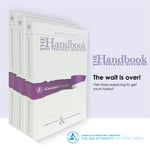 The 5th Edition Handbook of Pediatric Dentistry is the premier reference for pediatric dentists and other health professionals. Designed to serve as a quick reference guide, the handbook is a must-have addition to every practice. The Handbook of Pediatric Dentistry has been completely revised and updated to present the most up-to-date information in a quick reference format. Each chapter also suggests readings and useful Web sites for additional information. This 5th edition of the handbook is available as a mobile application too (compatible with iPad/iPhone/iPod Touch or Android mobile devices). Visit the AAPD website for more details or to purchase.
The 5th Edition Handbook of Pediatric Dentistry is the premier reference for pediatric dentists and other health professionals. Designed to serve as a quick reference guide, the handbook is a must-have addition to every practice. The Handbook of Pediatric Dentistry has been completely revised and updated to present the most up-to-date information in a quick reference format. Each chapter also suggests readings and useful Web sites for additional information. This 5th edition of the handbook is available as a mobile application too (compatible with iPad/iPhone/iPod Touch or Android mobile devices). Visit the AAPD website for more details or to purchase.
Also, customized brochures on 17 different pediatric dentistry topics are available from AAPD. For more information or to order, click here.
Optimizing Pediatric Airway Health: The Critical Role of Dentists
March 3-4, 2019 • ADA Headquarters • Chicago, IL 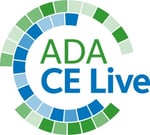 Registration is now open for the second ADA Children’s Airway Conference. This conference offers 10.5 CE hours and will guide the general, pediatric and orthodontic practitioner in the significance of sleep-related breathing disorders in children and how the ADA policy statement, The Role of Dentistry in the Treatment of Sleep Related Breathing Disorders, directs them to address the issue. Visit www.ada.org/CELive for more information and to register.
Registration is now open for the second ADA Children’s Airway Conference. This conference offers 10.5 CE hours and will guide the general, pediatric and orthodontic practitioner in the significance of sleep-related breathing disorders in children and how the ADA policy statement, The Role of Dentistry in the Treatment of Sleep Related Breathing Disorders, directs them to address the issue. Visit www.ada.org/CELive for more information and to register.
Also, did you know that there are over 50 hours of captured content at ADA 2018? Relive your ADA meeting experience, or take a course that you missed! Didn’t attend the Annual Meeting? Now’s your chance to experience the top ADA 2018 speakers from the comfort of your own home. Many courses from ADA 2018 will become available soon, subscribe now to start your one-year, all-access pass to ADA CE Online. Your subscription includes everything in the ADA CE Online library as well as all JADA and new courses being added. For more information, visit ada.org/cesubscriptions.

The consulting editor for JADA+ Specialty Scan — Pediatric Dentistry is James R. Boynton, DDS, MS, Clinical Associate Professor, Pediatric Dentistry Division Head, University of Michigan School of Dentistry. |
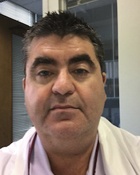
The consulting editor for JADA+ Specialty Scan — Pediatric Dentistry is Douglas B. Keck, DMD, MSHEd, Associate Program Director, Advanced Education in Pediatric Dentistry, Providence, Rhode Island NYU Langone Dental Medicine. |
|
JADA+ Specialty Scans and JADA+ Scans Editorial and Advertising Policies All matters pertaining to advertising should be addressed to the advertising sales manager, Sales and Marketing Department, American Dental Association, Publishing Division, 211 E. Chicago Ave., Chicago, IL 60611, 1-312-440-2740, fax 1-312-440-2550. All advertising appearing in ADA publications must comply with official published standards of the American Dental Association, a copy of which is available on request. |


